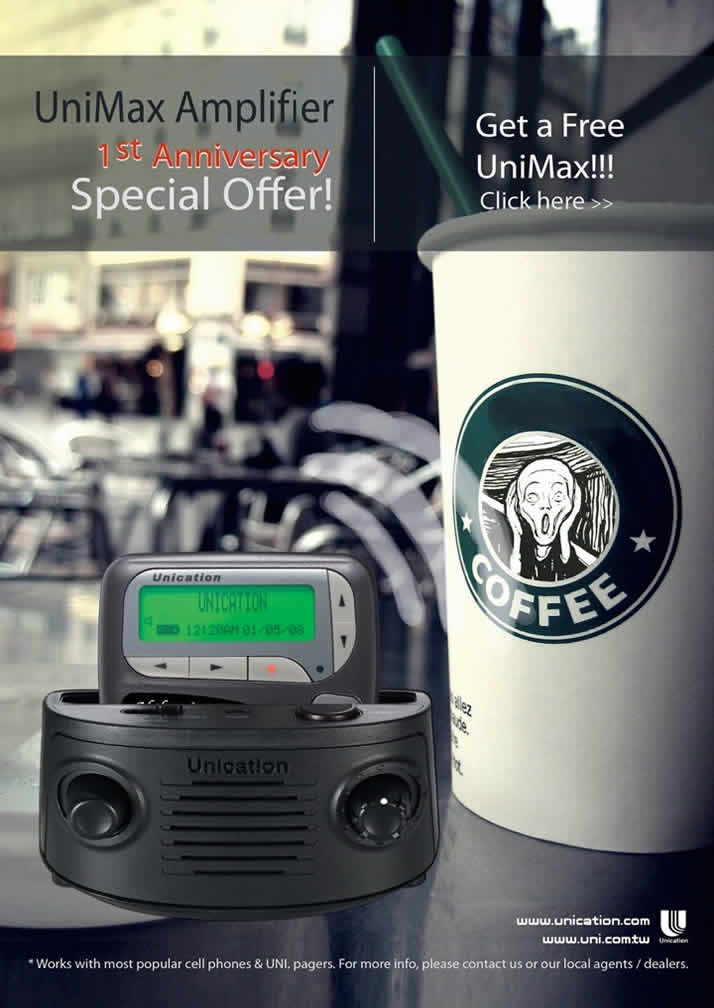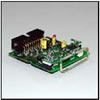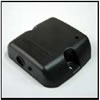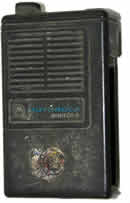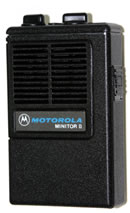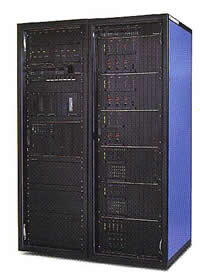BloostonLaw Telecom Update Published by the Law Offices of Blooston, Mordkofsky, Dickens, Duffy & Prendergast, LLP [Portions reproduced here with the firm's permission.] www.bloostonlaw.com |
| Vol. 13, No. 2 | x January 13, 2010 |
 FCC Asks For One-Month Extension For Delivering National Broadband Plan FCC Chairman Julius Genachowski has requested a one-month extension for delivery of the National Broadband Plan to Congress. In separate January 7 letters to John D. Rockefeller (D-W.Va.), Chairman of the Senate Commerce, Science, and Transportation Committee; Ranking Member Kay Bailey Hutchison (R-Texas); Rep. Henry Waxman (D-Calif.), Chairman of the House Energy and Commerce Committee; and Ranking Member Joe Barton (R-Texas), Genachowski listed “over 50 public workshops and field hearings, more than a dozen Public Notices, and significant hours devoted at Commission meetings to provide the public with updates on the Plan’s development” as reasons for the need for more time. An extension to March 17, 2010, he said, would have no impact on the FCC budget or other ongoing Commission activities. Robert McDowell, one of two Republicans on the Commission, expressed disappointment with the de-lay. "Once we receive a draft plan, I hope the document will reflect the benefit of the additional time be-ing taken to prepare it," McDowell said. The day before Genachowski sent his letter to Congress, Senator Hutchison wrote in the Hill newspaper that the FCC’s “forthcoming report to Congress can be a catalyst for decisive action to bring the benefits of broadband technology to all Americans and to close the gap between the United States and other developed countries in the communications capabilities available to individuals and businesses. For that to happen, the Commission’s report must itself be bold and comprehensive.” BloostonLaw contacts: Ben Dickens, Gerry Duffy, Mary Sisak, and John Prendergast. |
 INSIDE THIS ISSUE - FCC tweaks auction rules.
- Court affirms FCC order that ISP-bound traffic is interstate, interexchange.
- NCTA allies back attack on USF high-cost support.
- Comment sought on facilities siting recon request.
- FCC
names “Blogband” official
part of record.
|
FCC Tweaks Auction Rules The FCC has adopted an Order, in which it made two procedural amendments to its competitive bidding rules. First, the FCC amended the rule specifying how to report potential violations of section 1.2105(c), which prohibits certain communications between auction applicants (currently known as the “anti-collusion rule”). Currently, such reports are made both to the Division and to the Office of the Secretary of the Commission. However, the FCC realized that if an applicant is filing a report with the Secretary’s Office describing in detail a prohibited communication about its bids, bid strategies, or other restricted matters, other bidders may be able to review this filing, compounding any damage that may be done by the collusive communication. Therefore, the revised rule now provides that such reports shall be made as directed by public notice or, absent such direction, solely to the Auctions and Spectrum Access Division of the Wireless Telecommunications Bureau (WTB) by the most expeditious means available. This revised procedure is designed to reduce the risk that bidding-related information might be disseminated to auction applicants, which would be contrary to the purpose of section 1.2105(c). The FCC also amended the heading of section 1.2105(c), thereby changing the name of the “anti-collusion rule” to the “prohibition of certain communications rule.” The Commission indicates that this name change is designed to reduce confusion because “collusion is a term used in many contexts, legal and economic”. It is not apparent that the term “collusion” is used in any other FCC contexts, and there is room for concern that the change to “prohibition of certain communications” may be used to expand the already broad reach of the anti-collusion prohibition. In recent years, the FCC has interpreted the rule to cover not only communications about bids and bidding strategies, but also any discussion that could theoretically “affect” the auction participation of an applicant. This has created an air of doubt as to whether applicants can have necessary discussions about important ongoing matters that are totally unrelated to the auction, such as interconnection negotiations. Time will tell if the anti-collusion rule name change will have the effect of further broadening the prohibition, even though the FCC’s order indicates that the rule revision “makes no change to the substance of the rule, or its interpretation or application.” Second, the Commission has amended the rules specifying how quickly applicants must modify pending auction applications. The FCC now requires that such modifications be made within five business days after the reportable event occurs, or after the applicant becomes aware of the need to make an amendment or modification, whichever is later. This revision will enhance the usefulness of application information during the auction process and enable the Commission to respond promptly to changing circumstances if necessary. However, it will also require auction applicants to react quickly to any development that may arguably require reporting, or to risk a monetary fine or other sanctions for failure to timely report. Reporting Potential Violations of Section 1.2105(c): Subject to specific exceptions, section 1.2105(c) of the Commission’s rules prohibits applicants from cooperating or collaborating with respect to, discussing with certain other applicants, or disclosing to such other applicants, the substance of any applicant’s bids or bidding strategies, or discussing or negotiating settlement agreements. The rule’s prohibitions begin at the deadline for filing short-form applications to participate in an auction and end at the post-auction down payment deadline. Applicants making or receiving prohibited communications must report such communications in writing to the Com-mission immediately. The current rule provides that “[s]uch reports shall be filed with the Office of the Secretary, and a copy shall be sent to the Chief of the Auctions and Spectrum Access Division, Wireless Telecommunications Bureau.” The creation and filing of the required reports unavoidably creates a risk that information that the rule is intended to restrict may be disseminated inadvertently. The re-ports required under the rule themselves may constitute or contain information that applicants are otherwise barred from sharing. The Bureau has attempted to ad-dress this concern by advising applicants to request confidential treatment when filing reports. But he FCC has now concluded that it can further minimize the risk of in-advertent dissemination by requiring parties to file only a single report and to file that report with Commission personnel expressly charged with administering the Com-mission’s auctions. Accordingly, the FCC amended section 1.2105(c)(6) of its rules to provide that reports required by that section shall be filed as directed in the public notices that describe the procedures for the bid-ding that was the subject of the reported communication. If no public notice provides direction, such reports shall be filed with the Chief of the Auctions and Spectrum Access Division, Wireless Telecommunications Bureau, by the most expeditious means available. The FCC de-legated to the Bureau the authority to specify how such reports shall be made. Modifying Applications to Participate in Commission Auctions: Section 1.65(a) of the rules currently obligates an applicant to maintain the accuracy and completeness of in-formation furnished in any application pending before the Commission and to notify the Commission “as promptly as possible and in any event within 30 days” of any substantial change that may be of decisional significance to that application. Failure to comply exposes an applicant to dismissal of its application and, potentially, enforcement action. Section 1.2105(b) contains additional rules specifically addressing the modification and dismissal of short-form applications in competitive bidding proceedings. The FCC found that, in the context of competitive bidding for Commission construction permits and licenses, it is appropriate and reasonable to require that applicants furnish additional or corrected information more quickly than within 30 days. Most, if not all, information in auction applications is made available to the public and all auction participants during the auction. Auction participants may depend on ownership information in other participants’ applications when determining whether contact with a third party regarding potential financing is permissible under section 1.2105(c). In addition, if a change to an application could raise an issue as to the applicant’s continued eligibility to participate, the Bureau needs the information as soon as possible in order to consider whether to take any action and minimize disruption of the auction. Accordingly, through its public notices, the practice of the Bureau has been to require reports or amendments to short-form applications within a shorter interval than 30 days. The Bureau also has long required that any change that causes a loss of or reduction in eligibility for a bidding credit be reported “immediately.” The FCC has now formalized its informal practice by amending sections 1.65(a) and 1.2105(b) of its rules to require applicants in competitive bidding proceedings to furnish additional or corrected information within five business days of a significant occurrence, or to amend their short-form applications no more than five business days after the applicant becomes aware of the need for amendment. The FCC said the above rule amendments are procedural, and therefore have been adopted without a public rulemaking. BloostonLaw contacts: Hal Mordkofsky, John Prendergast, Cary Mitchell, and Bob Jackson. D.C. Circuit Affirms FCC’s Order That ISP-Bound Traffic Is Interstate, Interexchange The U.S. Court of Appeals for the District of Columbia Circuit has affirmed the FCC’s Nov. 5, 2008, order ruling ISP-bound traffic is interstate, interexchange traffic, and is covered by section 251(b)(5) of the Communications Act. The Court held that the FCC has authority under Section 201 to establish pricing rules for this traffic, and maintained the $0.0007 rate cap and the mirroring rule for ISP-bound traffic. In Core Communications v. FCC, the court consolidated petitions for review filed by Core, the New York Public Service Commission (PSC), and the National Association of Regulatory Utility Commissioners (NARUC). The Order arises out of the Commission’s concern with the results of applying the reciprocal compensation sys-tem to ISP-bound traffic. It was not long before some competitive local exchange carriers (CLECs) saw the opportunity to sign up Internet Service Providers (ISPs) as customers and collect, rather than pay, compensation because ISP modems do not generally call anyone. In some instances, this led to classic regulatory arbitrage that: (1) created incentives for inefficient entry of CLECs intent on serving ISPs exclusively and not offering viable local telephone competition; and (2) produced large one-way flows of cash that made it possible for CLECs to pay their ISP customers to use their services. The court said the Commission had provided a solid grounding for the differences between the treatment of inter-LEC compensation for delivery of dial-up internet traffic and the regime generally applicable to reciprocal compensation under section 251(b)(5) of the Communications Act. In the context to which reciprocal compensation is ordinarily applied, the court said that outgoing calls are generally balanced by incoming calls, so that it matters relatively little how accurately rates reflect costs. Such balance is utterly absent from ISP-bound traffic. Moreover, the court noted that the FCC found that the rates for ISP-bound traffic were so distorted that CLECs were in effect paying ISPs to become their customers. To the extent that ILECs simply passed the costs on to their customers generally (rather than having a separate charge for those making ISP-bound calls), they would force their non-Internet using customers to subsidize those making ISP-bound calls, and the system would send inaccurate price signals to those using their facilities for Internet access (in effect the ISPs and their customers) and to those not doing so. On the other hand, the Commission believed that its “failure to act . . . would lead to higher rates for Internet access, as ILECs seek to recover their reciprocal compensation liability . . . from their customers.” In other words, the court upheld the FCC’s finding that the continued application of the reciprocal compensation regime to ISP-bound traffic would “undermine[] the operation of competitive markets.” While taking some shots at the FCC for its lengthy delays in resolving the dispute, the court saved its hardest slap for the petitioner Core. In rejecting Core’s argument that the FCC had not complied with the court’s 2008 mandamus order, the court stated: “In context it is perfectly plain that our order sought simply to have the FCC explain the reasoning underlying its exercise of authority, not to preempt its analytical route. The sort of argument made by Core here gives pettifoggery a bad name.” BloostonLaw contacts: Ben Dickens, Gerry Duffy, and Mary Sisak. NCTA Allies Back Attack On USF High-Cost Support Early last month, the FCC asked for comment on the National Cable & Telecommunications Association’s (NCTA’s) request to establish procedures to reduce the amount of universal service high-cost support provided to carriers in those areas of the country where there is extensive, unsubsidized facilities-based voice competition and where government subsidies no longer are needed to ensure that service will be made available to consumers (BloostonLaw Telecom Update, December 9, 2009). Comments were submitted last week, and clearly the rural industry opposed NCTA’s petition. It is instructive, however, to see the positions of NCTA’s members and allies: Comcast, in its seven pages of comments, simply echoed NCTA’s argument and characterized it as “a thoughtful, creative step toward comprehensive reform of the Commission’s obsolete USF [Universal Service Fund] assistance programs.” Time Warner Cable (TWC) strongly supported the NCTA petition, saying its adoption would help to reduce the bloated size of the USF, ensure that limited USF re-sources are directed to where they will be most useful, and facilitate the transition to potential broadband sup-port mechanisms. Accordingly, TWC said, as the Com-mission considers universal service reform, either in the context of the National Broadband Plan or more general-ly, it should adopt rules to implement NCTA’s proposals as one of its first steps toward establishing a more sustainable, efficient, and effective funding mechanism. Sprint Nextel Corp. also supported the NCTA proposal but went further. It recommended that the current USF system recognize that multiple services are using the local loop and that 100% of the cost of this facility need not be attributed to the high cost fund. Instead, a portion of those costs should be recovered through the alternative revenue streams available to the ILEC through the provision of broadband and other services. Second, Sprint recommended that the FCC move away from carrier-based “supply-side” to more competitively neutral customer-based “demand-side” funding for any new broadband subsidy system. Specifically, Sprint proposes that demand be stimulated in rural areas and among low income groups through creation of a coupon program that encourages consumer adoption of broadband. The American Cable Association (ACA), while lauding the NCTA plan, did draw a distinction with its own proposal. A primary difference between the ACA proposal and the NCTA proposal, it said, is that the ACA’s proposal allows for small carriers of 100,000 lines or less to continue to draw from the fund as they do today. While reform is obviously necessary, the FCC should proceed cautiously as it relates to small service providers, as the ACA did by including the 100,000-line exemption in its proposal. BloostonLaw contacts: Ben Dickens, Gerry Duffy, and Mary Sisak. COMMENT SOUGHT ON TOWER “SHOT CLOCK” RECON REQUEST: On December 17, 2009, the National Association of Telecommunications Officers and Advisors, the United States Conference of Mayors, the National League of Cities, the National Association of Counties, and the American Planning Association filed a petition requesting that the Commission reconsider or clarify its decision adopting a 30-day “shot clock” for tower/antenna siting proposals. Petitioners argue in their Petition that the Commission's adoption of a 30-day review period for local authorities to determine the completeness of a wireless facilities siting request exceeds its authority under its own interpretation, does not allow local authorities to toll the adopted time limits for other reasons, and will result in significant unintended consequences. The Petition also argues that the Commission did not provide affected parties the opportunity for input before adopting the 30-day review period. Comments in this WT Docket No. 08-165 proceeding are due January 22, and replies are due February 8. BloostonLaw contacts: Hal Mordkofsky, John Prendergast, and Ri-chard Rubino. FCC NAMES “BLOGBAND” OFFICIAL PART OF RECORD: On September 22, 2009, a public notice was released to explain the relationship of “Blogband,” a blog created to foster public dialog about the National Broad-band Plan, to the administrative record being developed in that proceeding. That public notice specified that Blogband is “hereby deemed to be part of the public record in GN Docket No. 09-51.” In addition to Blogband, the FCC has also launched an idea collaboration plat-form at http://broadband.ideascale.com to allow public feedback, comment, and discussion that will help the FCC in developing the best possible Plan. In creating this forum, the FCC recognizes the need to reconcile such innovative use of the Internet in communicating with the government with the more traditional requirement of creating an administrative record, (i) to give interested parties notice of other parties’ comments, and (ii) to allow the Commission to address significant issues. For the same reasons that Blogband was deemed to be part of the public record in this docket, postings on http://broadband.ideascale.com are also deemed to be part of the same public record. For this reason, interest-ed persons are advised to review not only ECFS and Blogband, but also http://broadband.ideascale.com to ensure that they are aware of all relevant views ex-pressed to the Commission concerning the National Broadband Plan. Further, because all material on http://broadband.ideascale.com is available for review by the public and because the FCC is treating postings on http://broadband.ideascale.com as a part of the public record in this proceeding, it is waiving Section 1.1206(b)(1) of its ex parte rules, 47 C.F. R. § 1.1206(b)(1), which would otherwise require that the postings on http://broadband.ideascale.com be submitted to the Commission’s Secretary for inclusion in the public record. Specifically, although the National Broadband Plan proceeding has been classified as “permit-but-disclose” for purposes of the ex parte rules, postings on http://broadband.ideascale.com need not be separately filed for inclusion in the public record. Accordingly, comments in the proceeding may be filed by using Blog-band, the FCC’s Electronic Comment Filing System (ECFS) or submitting them at http://broadband.ideascale.com. A simplified interface for ECFS has been implemented to facilitate consumer comment. BloostonLaw contacts: Ben Dickens, Gerry Duffy, and Mary Sisak. GENACHOWSKI QUESTIONS VERIZON’s RESPONSE ON EARLY TERMINATION FEES: At the Consumer Electronics Show (CES) in Las Vegas last Friday, FCC Chairman Julius Genachowski said that Verizon Wireless needs to more clearly explain its early termination fees (ETFs)—i.e., its policies on fees it charges when customers cancel their cellphone services before the end of their contract, according to Reuters. The FCC is investigating a recent doubling of the ETF charged by Verizon Wireless, and has sent the carrier a list of questions in this regard (BloostonLaw Telecom Update, December 22, 2009). Asked to comment on Verizon Wireless’ filing addressing the inquiry, Genachowski told Reuters that he needs more information. "I thought that response raised more questions than it answered. The [Wireless Tele-communications Bureau] is looking into that," he said but declined to say what the FCC's next move would be in that case. Verizon Wireless had cited increasing costs for the rise in the ETF, Reuters said. "There's a very real level of consumer confusion around these areas," Genachowski said. BloostonLaw contacts: Hal Mordkofsky, John Prendergast, and Cary Mitchell. GOOGLE REPORTEDLY NOW HAS ITS OWN EARLY TERMINATION FEE FOR NEXUS ONE: A Sprint-sponsored blog reports that Google is imposing its own Early Termination Fee (ETF), or what it calls an “Equipment Recovery Fee,” on its new Nexus One phone, for $350, if the customer cancels service within the first 120 days. This is in addition to any ETF fees imposed by the carrier. According to the blog, which looked at a recent T-Mobile service contract, “Nexus One owners who decide to end their service after a 14-day trial period is over but before four months have passed will be hit with upwards of $550 in fees — more than if you bought the phone outright from the start, especially when you factor in the upfront $180. There hasn't been enough time for someone to tempt fate, but who knows — come January 20th when early adopters' trial period ends, there might be some interesting stories abound.” This story may be worth watching. HOW MAGICAL ARE MagicJack’s FREE CELL PHONE CALLS INSIDE THE HOME? According to Yahoo.com, YMax, the company behind the magicJack, has made a new version of its Internet phone device that allows free calls from cell phones in the home, that may draw fire from cellular carriers. Yahoo says the new magicJack uses, without permission, radio frequencies for which cellular carriers have paid billions of dollars for exclusive licenses. Yahoo reports that YMax Corp., which is based in Palm Beach, Fla., said this week at the International Consumers Electronics Show that it plans to start selling the device in about four months for $40, the same price as the original magicJack. As before, it will provide free calls to the U.S. and Canada for one year. The device is, in essence, a very small cellular transceiver for the home. Yahoo’s description: The size of a deck of cards, it plugs into a PC, which needs a broadband Internet connection. The device then detects when a compatible cell phone comes within 8 feet, and places a call to it. The user enters a short code on the phone. The phone is then linked to the magicJack, and as long as it's within range (YMax said it will cover a 3,000-square-foot home) magicJack routes the call itself, over the Internet, rather than going through the carrier's cellular tower. No minutes are subtracted from the user's account with the carrier. Any extra fees for international calls are subtracted from the user's account with magicJack, not the carrier. According to YMax, the device will connect to any phone that uses the GSM standard, which in the U.S. includes phones from AT&T and T-Mobile USA. Most phones from Verizon Wireless and Sprint Nextel Corp. won't connect to the device. YMax says the device is legal because wireless spectrum licenses don't extend into the home. Yahoo noted that U.S. carriers have been selling and experimenting with devices that act similarly to the wireless magicJack. They're called "femtocells." Like the magicJack, they use the carrier's licensed spectrum to connect to a phone, then route the calls over a home broadband connection. They improve coverage inside the home and offload capacity from the carrier's towers. But femtocells are complex products, because they're designed to mesh with the carrier's external net-work. They cost the carriers more than $200, though some sell them cheaper, recouping the cost through added service fees. YMax's magicJack is a much small-er, simpler design. Will the FCC have a problem with the possible unauthorized use of cellular/PCS channels? That issue must be resolved. Notably, the FCC has rejected efforts by users to claim dominion over cell frequencies in other contexts, such as at-tempts by theaters, restaurants, etc. to block cellular calls in their premises. The FCC has made it clear that cell phone jamming is illegal, even under such limited circumstances. BloostonLaw contacts: Hal Mordkofsky, John Prendergast, and Richard Rubino. 
BloostonLaw
Private Users Update Published by the Law Offices of Blooston, Mordkofsky, Dickens, Duffy & Prendergast, LLP [Portions reproduced here with the firm's permission.] www.bloostonlaw.com |
| Vol. 11, No. 1 | x January 2010 |
FCC Seeks Comment On Signal Booster Issues The FCC seeks comment on three Petitions for Rulemaking and two Petitions for Declaratory Ruling regarding the proper use of signal boosters on frequencies licensed under Parts 22, 24, 27, and 90 of the Commission’s Rules. Signal boosters are devices that amplify and/or distribute wireless signals to areas with poor signal coverage, such as tunnels, subways, large buildings, and rural areas. When properly installed, these devices, which can either be fixed or mobile, can help consumers, wireless service providers, and public safety first res-ponders by expanding the area of reliable service to un-served or weak signal areas. However, improper installation and use of these devices can interfere with network operations and cause interference to a range of communication services. While FCC rules allow the use of signal enhancing devices, several parties have filed Petitions seeking clarification of or changes to Commission rules to address the proper use and regulation of these devices. On August 18, 2005, Bird Technologies, Inc. filed a Petition for Rulemaking to amend section 90.219 to outline specific technical and operational requirements for the use of signal boosters by Part 90 licensees. Bird Technologies suggests that signal boosters should only be used with the full knowledge of licensees and that consumers should be made aware of the requirement to obtain licensee permission. On November 2, 2007, CTIA-the Wireless Association (CTIA) filed a Petition for Declaratory Ruling regarding the proper use of signal boosters in Commercial Mobile Radio Services (CMRS). CTIA contends that harmful interference is being caused to CMRS networks by unauthorized and inappropriately installed signal booster devices, which impacts both commercial and public safety communications. CTIA urges the Commission to clarify that the sale or use of signal boosters without appropriate CMRS licensee consent is unlawful. The CTIA Petition also addresses the use of signal jamming devices, but the FCC is not seeking comment on this issue in this proceeding. On September 25, 2008, Jack Daniel DBA Jack Daniel Company filed a Petition for Declaratory Ruling seeking clarification of the Commission’s rules regarding signal boosters. Generally, Mr. Daniel seeks clarification of the operational and technical limits that apply to Part 90 wideband signal boosters under the Commission’s rules. He alleges that the Commission’s rules and policies are being misinterpreted and that misconceptions exist in the marketplace. Mr. Daniel also requests that the Commission declare that it does not intend to regulate wideband signal boosters in such a manner to negate efforts by local governments and public safety entities to improve wireless coverage by mandating signal booster deployment. On October 23, 2009, the DAS Forum (a membership section of PCIA—The Wireless Infrastructure Association) filed a Petition for Rulemaking in response to the CTIA Petition stating that a rulemaking proceeding is needed to address the marketing, installation, and operation of signal boosters used in the Cellular Radiotelephone and Personal Communications Services. It requests that the Commission explore the best methods of resolving interference issues without resorting to regulations that unnecessarily inhibit the sale and installation of signal boosters, such as requiring prior licensee consent, or hinder market innovations. The DAS Forum submits an Industry Code of Conduct as a reasonable structure for the development of rules to address the marketing and use of signal boosters and proposes that this Code can be easily incorporated in or cross-referenced by the Commission’s rules. On November 3, 2009, Wilson Electronics, Inc. filed a Petition for Rulemaking asking the Commission to commence a proceeding to amend Part 20 of its rules to establish standards for the certification of signal boosters for subscriber use on CMRS networks by developing equipment certification requirements to ensure boosters are available to the public. Wilson states that the Com-mission, as opposed to wireless service providers, should adopt equipment certification requirements to ensure that signal boosters will not cause interference to network operations. Comments in this WT Docket No. 10-4 proceeding are due February 5, and replies are due February 22. BloostonLaw contacts: Hal Mordkofsky, John Prendergast, and Richard Rubino. AAA Seeks Approval For Frequency Coordination On July 7, 2009, the American Automobile Association (AAA) filed an informal request for frequency coordination certification. On December 29, 2009, in response to a staff request for additional information, AAA filed a supplement to the request. AAA seeks certification to provide frequency coordination for Business/Industrial/Land Transportation (B/ILT) Pool frequencies in the 806-816/851-861 MHz and 896-901/935-940 MHz bands. The FCC seeks comment on AAA’s request. In 1986, the Commission certified frequency coordinators in the private land mobile radio services. At this time, AAA was certified to coordinate certain frequencies be-low 512 MHz. In 1997, the Commission determined that the Industrial/Business Pool below 512 MHz would be administered by multiple coordinators, thus ending exclusive frequency coordination on certain frequencies and allowing competition to be introduced into the coordination process in those frequencies. The Wireless Tele-communications Bureau subsequently introduced competitive coordination to the 800 MHz and 900 MHz bands. Noting that the Commission found it qualified to be certified for the Industrial/Business Pool below 512 MHz, AAA states that it is qualified, and meets the criteria to be certified, to coordinate applications for the 800/900 MHz B/ILT Pool. In this connection, AAA suggests that Indus-trial/Business systems below 512 MHz are similar to such systems above 800 MHz. Moreover, AAA states that granting the instant request would be in the public interest and consistent with the Commission’s statements in support of competition. Comments in this WT Docket No. WT 10-3 proceeding are due February 4, and replies are due February 19. BloostonLaw contacts: Hal Mordkofsky, John Prendergast, and Richard Rubino. FCC Addresses Maritime Reconsideration Petitions The FCC has adopted a Memorandum Opinion and Or-der that addresses two petitions for reconsideration, filed respectively by AMTS Consortium LLC, Telesaurus VPC, LLC, Intelligent Transportation & Monitoring Wireless LLC, and Warren Havens, and by Northeast Utilities Ser-vice Company (NUSCO), of the Report and Order in the Maritime Services. The Report and Order provided VHF Public Coast (VPC) and Automated Maritime Telecommunications System (AMTS) licensees additional operational flexibility by permitting them to offer private correspondence service to units on land. The FCC denied Havens’s petition and granted NUSCO’s petition in part. The Maritime Services, which include both VPC and AMTS services, provide for the unique distress, operational, and personal communications needs of vessels at sea and on inland waterways. The rules governing these services permitted VPC and AMTS stations to provide either public or private correspondence service to mari-time vessels, but only public correspondence service to units on land. The Commission released a Notice of Proposed Rule Making in this proceeding in response to petitions for rulemaking requesting amendment of the Commission’s Rules to provide VPC and AMTS licensees with certain additional operational flexibility, primarily the ability to provide private correspondence service to units on land on a non-interconnected basis. The Commission pro-posed to revise the Part 80 rules to permit VPC and AMTS licensees to provide private land mobile radio (PLMR) services, but declined to propose other rule changes, including permitting VPC geographic licensees to choose whether to provide maritime public correspondence service, and elimination of various Part 80 regulatory obligations (particularly Part 80 equipment standards). The Commission was concerned that the requested revisions could undermine the core purpose of the Maritime Services and create a de facto reallocation or otherwise remove spectrum from the maritime community. In the Report and Order, the Commission amended its rules to permit private correspondence service to units on land. It also eliminated the interconnection requirement for AMTS stations providing private correspondence service. The Commission noted that demand to use the allocated frequencies for maritime public correspondence had decreased, partly due to mariners’ increased access to cellular, PCS, and satellite services, while demand for PLMR services, including public safety and traditional dispatch services, had increased. It further noted that many VPC and AMTS geographic licensees are authorized to provide service in areas remote from coasts or navigable waterways and should be allowed to put to use this excess capacity in order to promote spectrum efficiency. The Commission declined to remove certain regulatory requirements in order to, inter alia, permit VPC or AMTS licensees offering land mobile radio communications to operate in conformance with the Part 22 or Part 90 rules, rather than the Part 80 requirements. The Commission reaffirmed its commitment to ensure that VPC and AMTS services primarily benefit the maritime community, and explained that eliminating such a requirement would create a risk of a de facto reallocation of this spectrum from maritime to land mobile use. The Commission also denied Havens’s request that it clarify that Section 80.123(d) of the Commission’s Rules permits VPC and AMTS licensees that provide service to units on land to use base station equipment approved under Part 22 or Part 90. The Commission explained that the rule requires VPC and AMTS base station equipment to be certified under Part 80, and permits only land mobile units operating in conjunction with such base stations to be authorized under Parts 22 or 90. In addition, the Commission rejected Havens’s argument that the new operational flexibility for AMTS licensees to provide private correspondence service to units on land should be accorded only to AMTS geographic licensees, but not to site-based incumbent AMTS licensees. The Commission noted, however, that the rules did not previously differentiate between site-based and geographic AMTS licensees in terms of operational flexibility, and concluded that there was no basis for such divergent treatment. The FCC noted that Havens requests reconsideration with respect to whether licensees operating in areas with no navigable waterways should be permitted to use Part 90 base station equipment, and whether the new operational flexibility accorded by the Report and Order should apply to site-based incumbent AMTS licensees. NUSCO requested a clarification that the Report and Order “serves to finalize” the rule waiver granted to NUSCO to operate a private system serving units on land on AMTS spectrum. Havens Petition. The Report and Order denied Havens’s request that Section 80.123(d), which provides that “Radio equipment used on land must be certified for use under part 22, part 80, or part 90,” be interpreted to permit licensees serving units on land to use Part 22 or Part 90 base station equipment. The Commission clarified that Section 80.123(d) permits only AMTS and VPC land mo-bile units, but not base stations, to be approved under Part 22 or Part 90. The FCC concluded that because the Havens petition seeks what would amount to an amendment of the rule, the request is beyond the scope of the Report and Order, and therefore cannot be addressed in the context of a petition for reconsideration. Havens will have to file a petition for rulemaking to pursue the matter further. Havens also requested reconsideration of the FCC decision to accord the new operational flexibility to incumbent site-based AMTS licensees as well as geographic AMTS licensees. Havens said it is unfair to afford site-based incumbents the same operational flexibility as geographic licensees, because geographic licensees have a more extensive coverage requirement. The FCC said it is not persuaded by this argument. As the Report and Order noted, the Commission has always afforded AMTS site-based licensees the same flexibility as site-based licensees, including the flexibility to serve units on land. Any imbalance that Havens perceives with respect to their construction and coverage requirements is irrelevant to the issue of whether to treat site-based and geographic AMTS licensees consistently in terms of their operational requirements. NUSCO Petition. In 2005, the Wireless Telecommunications Bureau’s Public Safety and Critical Infrastructure Division granted NUSCO a waiver of Sections 20.9, 80.5, 80.123, and 80.475 of the Commission’s Rules to permit it to use AMTS spectrum for PLMR operations in support of its utility services, conditioned on the outcome of this proceeding. NUSCO now seeks clarification that the Report and Order did not affect its operating privileges under this waiver. In the alternative, NUSCO seeks reconsideration of the Report and Order to the extent necessary to finalize the waiver with no further action required by NUSCO. The FCC now clarifies that operations commenced pursuant to the waiver that conform with the rules adopted in the Report and Order may continue with no additional authorization; to the extent, however, that the operations of NUSCO (or other entities operating pursuant to similarly conditioned waivers) conflict with the rules adopted in the Report and Order, those operations may not continue until they are brought into compliance. If any such waiver recipient believes that it cannot comply with any requirement of the rules, it must request a separate waiver. BloostonLaw contacts: Hal Mordkofsky, John Prendergast, and Richard Rubino. FCC Reduces Forfeiture For Nevada Yellow Cab The FCC has issued a monetary forfeiture in the amount of $6,000 to Nevada Yellow Cab Corp. DBA Yellow Cab, licensee of Private Land Mobile radio station KNNU518, in Las Vegas, Nevada, for willful and repeated violation of Section 1.903(a) of the Commission’s Rules. On December 19, 2008, the Enforcement Bureau’s Los Angeles Office issued a Notice of Apparent Liability for Forfeiture (NAL) in the amount of $12,000 to Nevada Yellow Cab for operating station KNNU518 on 152.375 MHz and 157.635 MHz, frequencies not authorized by its license, and by operating station KNNU518 from a location not authorized by its license. The FCC considered Nevada Yellow Cab’s arguments that it made a good faith effort to comply with Rules prior to the inspection by the Los Angeles Office, and that it has a history of compliance with the Commission’s Rules. Nevada Yellow Cab does not dispute the facts recited in the NAL. Instead it argues that it made numerous at-tempts to amend its license and had contracted with an outside company in 2006 to ensure that the required amendments to the license were made. When Nevada Yellow Cab discovered in April 2008 that its radio operation was not properly licensed, it terminated its relation-ship with the company it was dealing with and in June 2008 contracted with another company which had commenced frequency coordination prior to the Los Angeles agent’s inspection. This company ultimately succeeded in coordinating and filing an application with the Commission, however, no application was filed until after the Los Angeles agent’s inspection on October 9, 2008. Reductions of proposed forfeitures based on good faith efforts to comply generally involve situations where violators demonstrated that they initiated measures to correct or remedy violations, or that they had established compliance programs in place, prior to the Commission’s involvement. The FCC found that Nevada Yellow Cab’s efforts prior to the inspection by the Los Angeles agent warrant a substantial good faith reduction. Consequent-ly, the FCC reduced the proposed forfeiture to $8,400. Nevada Yellow Cab also appears to contend that it has a history of overall compliance with the Commission’s Rules. The FCC agreed. Consequently, it further reduced the proposed forfeiture to $6,000. Nevada Yellow Cab also states that its operations are now in compliance with it licenses. The Commission has stated in the past that a licensee is expected to correct errors when they are brought to the licensee’s attention and that such corrections are not grounds for a downward adjustment in the forfeiture. BloostonLaw contacts: Hal Mordkofsky, John Prendergast, and Richard Rubino. FCC Denies TSPA Request To Relax Tower Siting Rules The FCC has denied the 2005 Petition for Reconsideration of the NPA Report and Order filed by the Tower Siting Policy Alliance (TSPA). In the NPA Report and Order, the Commission adopted and codified the Nationwide Programmatic Agreement Regarding the Section 106 National Historic Preservation Act Review Process (NPA), which governs the review of proposed communications facilities for their effects on historic properties under Section 106 of the National Historic Preservation Act of 1966 (NHPA). The TSPA does not challenge the NPA as a whole, but it seeks reconsideration of six dis-crete provisions or sets of provisions within the NPA. The FCC declined to adopt on reconsideration any of the proposed changes to the NPA that are put forth in the TSPA petition. The TSPA contends that: (1) the NPA provisions mandating archeological field surveys for most undertakings are burdensome and should be amended; (2) the requirement to invite Tribes and Native Hawaiian Organizations (NHOs) to participate in considering pro-posed undertakings within certain exclusions is burden-some and unjustified; (3) the requirement to do more than review records maintained by the State Historic Preservation Officer (SHPO) or Tribal Historic Preservation Officer (THPO) to identify historic properties of religious and cultural significance to Tribes and NHOs that may be visually affected by undertakings is burdensome and unjustified; (4) the standard for protecting the confidentiality of information significant to Tribes and NHOs is overly broad and exceeds the requirements of the NHPA and of the Advisory Council on Historic Preservation’s (ACHP’s) rules; (5) the NPA improperly enables consult-ing parties to block Memoranda of Agreement (MOAs) regarding mitigation of adverse effects; and (6) the NPA should be amended to add a provision for designating a lead agency where more than one federal agency is involved in an undertaking, consistent with Section 800.2(a)(2) of the ACHP’s rules. BloostonLaw contacts: Hal Mordkofsky, John Prendergast, and Richard Rubino. |











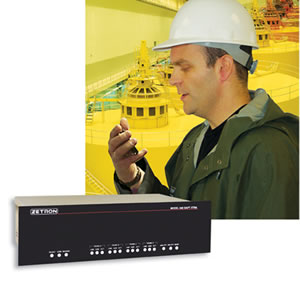 The Model 640 DAPT-XTRA Paging Terminal is a cost effective solution for small to medium-sized systems and private organizations offering a paging service based on bureau-type operator paging and/or direct telephone access. The 640 supports up to 1,500 users with up to 4 telephone lines. It also supports voice paging, voice prompts, talkback paging, and alphanumeric paging.
The Model 640 DAPT-XTRA Paging Terminal is a cost effective solution for small to medium-sized systems and private organizations offering a paging service based on bureau-type operator paging and/or direct telephone access. The 640 supports up to 1,500 users with up to 4 telephone lines. It also supports voice paging, voice prompts, talkback paging, and alphanumeric paging.  Zetron's Remote Monitoring equipment provides monitoring and notification of unusual conditions and status changes. Messages are automatically transmitted over a radio or a public address system. Notification can be sent via speaker or radio announcement, telephone, cellular phone, or paging.
Zetron's Remote Monitoring equipment provides monitoring and notification of unusual conditions and status changes. Messages are automatically transmitted over a radio or a public address system. Notification can be sent via speaker or radio announcement, telephone, cellular phone, or paging. 


